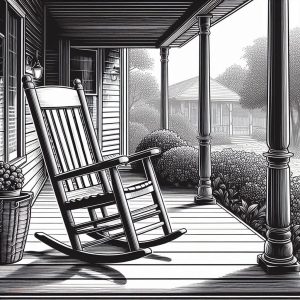By Tom McGowan
I played ball for most of my childhood in the Bronx. The first few years I played in Little League. It did not go well for me, although I learned about the advantages conferred by nepotism. Out of 8 or so teams, the ones with the “good” names—the Yankees, the Dodgers, the Giants—were all run by coaches who knew the game. They had their kids on their teams; and their kids, having been taught how to play since they were able to walk, were naturally among the star players. I did not fit in the star player or son-of-coach category, so I was always on a “leftover” team. We might get lucky and win a game or two each season playing another leftover team. Not much fun. Later, things improved, when I started playing unorganized (or was it disorganized?) sandlot baseball. My strength and coordination finally kicked in when I was about 14, allowing me to hit an occasional line drive so hard that those in the field backed out of the way rather than try for it. And after that, well, jobs and girls and other distractions finished off baseball for us all.
My son Sam began his baseball career when he was 7, joining the Grant Park T-ball league in Atlanta. Since we lived close by, we would ride our bikes to the field. No freighting around in cars trying to remember where you were supposed to play; all the games would be on the flats near the gym in the park. Memories of those whiz-kid ballplayers of my youth, the ones lucky enough to be the coach’s kid, must’ve been bubbling near the surface of my subconscious, for I found myself getting involved at practices and asking the coach how I could help out. This developed into my being assistant coach and eventually full coach over the course of the four years Sam played ball. We were enjoying this shared activity so much that we played in the Decatur summer league too. I learned, slowly, the art of coaching. Some things I learned on my own, such as when your child is on your team and he or she has a bad day, you have a bad day. (Talk to any coach who has coached his own kid; “Oh yeah,” they will say with a sigh). Others I learned from good coaches and the training tapes that somehow you never see until you have been at it two years. Helping shape fledgling players and sharing an interest in baseball with my son, I found ten times more pleasure in the sport as an adult than I had as a child.
But back to my son Sam. Despite my support, he was an average player. Could hit some and field some. Had his good days and bad. And after four years, with soccer and other things tugging at him, his interest in baseball was going downhill. This was wearing for both of us, but we had just a few games left in the summer season, and I did my best to keep him going.
Then came the last game of the season. We had been doing well enough, maybe a 5-3 record or so, but were now up against an undefeated team. By this time, of course, we’d graduated from T-ball to kid-pitch hard ball. We were in the last inning, and were up first, ending up with an 11 to 7 score in our favor. Looking good! Then the other side got up to bat. The score went from 11 to 7, to 8, to 9, to 10. We could not get that last out. Now we stood with two outs, a base runner in scoring position on second base, and a HUGE child (he looked years too old for the league) swinging a wicked-looking bat. On the third pitch, he stroked a high pop fly to short center field. On a good day, one of our outfielders might have gotten an out on it. More often, they ran in dizzying circles as if stung by a bee, then let the ball drop, or bounce off their glove, or glance off their head. Anything but a clean catch. If any of that happened, chances were the batter would end up with an inside-the-park home run.
So with the game in the balance, I watched this towering pop fly go way, way up, seemingly forever, and take its time coming down. And who is playing center field? My son Sam. I watch it all happen in slow motion. The ball is coming down. Sam is not moving at all. He has his glove out in front of him, Willy Mays basket catch-style, watching the ball drop. The ball continues to drop. Sam does not move a muscle. The ball drops into his glove, the glove sags a few inches from the impact…but he holds onto it! Our team wins the last game, and Sam is the hero of the day! A great way to end a Little League career, for Sam and his dad.
This story has an epilogue. Two years later, while standing in the checkout line at the local CVS, I found myself talking to one of the Grant Park League moms, whose child had been on my team. We caught up on our children, and I reminisced about Sam’s final game in the Decatur league, retelling the story of that game. As I finished the story, a voice boomed over my shoulder, saying, “I was there.” My serendipitous witness introduced himself as Dan. Sam’s big catch in the last game of the season seemed to be indelibly etched in Dan’s memory too, just as it was in mine, with good reason—his son had been on the losing team that day.








Comments are closed.